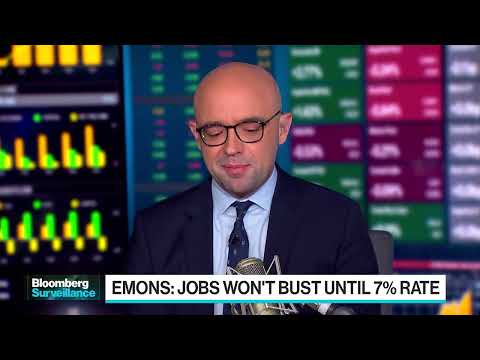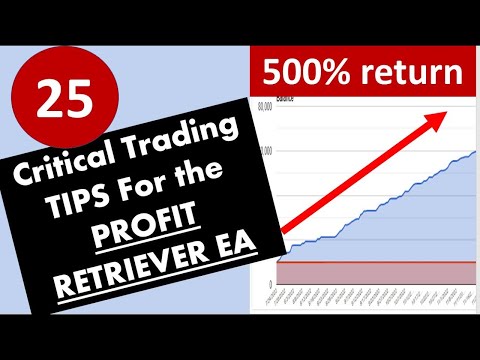Waktu Yang Tepat Untuk Recovery || The Right Time To Do Recovery

*Opening Music* "I wanna ask, sir" Yes, "For example, we take Buy position. Turns out, it goes down long. Can we do Averaging down by Martingale?" We can, but it needs practice. Because it's very dangerous and if you don't have experience there, it will be harmful When you want to practice it using Demo account, that's ok. I don't forbid you because it's a part of rescue process. But, please remember that Marti is high-risk Because I also use Marti. Like the video that I shared on the group. When I order, the market reverses quickly and we must move fast Sometimes, I use Marti, sometimes, I do cut loss You may try it. When you practice it, you need to do many trial
After you try it, you need to consider it What that must be considered? The first is durability So, for the stronger judgment when we do Recovery process, Recovery is we try to cover the loss by increasing or decreasing our position In a forced condition, at least it decrease the loss Not looking for profit when the market reverses Please remember that the first thing to do is minimizing the loss As long as the loss is low, we can minimize it After that, we seek another opportunity. It doesn't mean we must order continuously at that time You may watch the video that I shared yesterday. I did wrong order. The market reversed continuously What I did was cut loss, increase and decrease the transaction That's the example of how I do Recovery at that time We don't need to wait for it till tomorrow or some hours later to do Recovery But, we can finish it when the condition is running Even in 1 candle, I often clear all of the transactions Before the candle changes, all of them clear Clear means all of the transactions are closed even the result is minus or plus If the result is minus, at least we can decrease the loss If the result is plus, we can cover all of them and ended by getting profit It also needs long practice Because the market type isn't always same. It always change everyday However, there is a lil bit similarity From those similarity, at least, we have consideration there That's why when we do wrong order, we do Recovery, Averaging, or even Martingale "We do Averaging down and Martingale every how many Pips?" It couldn't be like that. It must follow the market condition. We can't measure it by the numbers, time, and Pips.
All of them are based on the market condition Sometimes, the market fluctuation can be very wild So, there is no fix reference I mean, there is no fix reference like a formula. Maybe, every 5 minutes, 500 Pips, or 3%. It couldn't be like that Because all of them depend on the market condition and also it depends on how we face it I also can't make sure that it will be in 500 Pips Sometimes, in 300 Pips, we can do Averaging again or Marti Sometimes, it can be more than this The point is don't be too far. If it's above 800 Pips, it's hard Although it's twice or thrice of it, it's still hard. Even it will be very dangerous For example, we order Buy The Lot is 0.5. It went down 800 Pips.
It means, our loss is $400 Then, we do Martingale with Sell or Buy With Lot 1.0 In this condition, although there is up correction opportunity, but it's hard to go back to up again If it goes down again, our durability will be weak How to solve it? I'll give you the example how if the market moves like this We order Buy with 0.25 Lot Turns out, the market goes down When the market goes down like this, we see the intensity of the movement The first is the intensity or the beat by beat It means, when it rise 1, it goes down 2. It rise 3, goes down 2 Doesn't mean we count it from the numbers of movement, but we see it from the formed volume When it goes down long, for example, 5 beats and rise 3 beats. That's what I mean how the volume is getting thicker or thinner When the volume is getting thicker, it means the momentum is getting stronger The direction is same with the volume If the volume is red, it's Seller volume or very strong Sell momentum Then, we also pay attention to the time Time is very important. If it's 5-10 minutes earlier, it's still shaking
Shaking means it can moves quick and go back quickly too It's different from pressure. If it's pressure, it can be in a long time. For example, the market is red like this In the first 5-10 minutes, the red candle is thick and it's hard to go up Then, it goes down again It rises a lil bit It goes down more Then it rises a lil bit It goes down more again We see the volume Then, how's the aggressiveness level? When it's more than 20 minutes, it starts to be thick Please be careful there. Because if the Seller is like this, it will be getting stronger Although when it's thick like this, there is up correction When it's thick like this, there is no rejection at the bottom, I often use it to order Buy quickly I just need some correction Pips My standard is 100 Pips or 10 Pips You need to do more practice if you want to do this kinds of thing When it goes down without bottom tail, don't take Sell position How to take Sell position without against the flow? Wait for there is up correction, then we take Sell position At least, it's up to this or it's same with our target. If we think it's enough here, we close it first.
Then, when we take opposite position, when the flow goes down, no bottom rejection, we order Buy, don't take it too long See the condition. If it rises, there is correction, close it directly If we ordered Buy, turns out it goes down again, we see the percentage of our loss How much the minus is? If it's just 2-5% from budget, it's still safe Please keep it. Don't let the minus more than 20% If you can, keep it around 2-5% There will be minus if it goes down again. How much the minus is? We see our budget
For example, the budget is $3.000 The minus is $200 So, the minus is $200 : $3.000 x 100% If it's still around 2-5%, it's safe. that's no problem. It won't run out But we keep controlling it. Don't let it more than 20%. That's the maximum Although we order with the larger Lot, that's no problem The point is we still maintain it. Not more than 20% Maybe there are 3x transactions. All of them are Buy. So, we must decrease it
Which transaction that we decrease? We see the order point which is the farthest from running Because if it's too far, it takes long time to go back and it becomes burden. So, we close the farthest first Second, pay attention to the Lot We pay attention to the big Lot Which one the largest Lot and reverse? Go close it directly because it's very endanger our durability Back to our way in facing it and how we have long experience there Of course, the usage of Lot becomes our key in managing our budget How we control our Lot, how we control our risk If we have tried and much experience in using Lot and applying the risk, Whenever the market movement is, it becomes usual There is no problem. Because when the market rise or go down, we know how to solve it My suggestion is, if you take the risk, take it in the SNR area. It will be more touched. Because market always close to SNR area When it rise, it will close the Resistance area. When it goes down, it will close the Support area. Don't use SNR indicator. Because it's too far We can use our own SNR which becomes psychology level Psychology level is the area where the market is unable to continue moving When it rise, there are rejections at the left side. We call it as psychology level
Buyer can't reach it. It goes back When it goes down, there is rejection area at the left side. So, we call it as psychology level The closest will be safer and we don't take the risk too far For example, now, it's the closest If it changes to green candle, the up potential will be much stronger It means, there is opportunity to order Buy there Now, we try to do simulation. For example, it's ended by green candle here or it's ended by small red candle, that's no problem. Buyer will still dominant How to take the available opportunity? For example, it changes to green candle So, we can order on the next candle How if the candle is red? If the candle is red but it's thin, there are rejections at the bottom. It still goes up
For example, it's closed by green candle. It's not too big. It's just like this So, we order Buy on the next candle The most important thing is waiting for the opportunity, not waiting for the floating If it's in the last minutes, the condition is like this, we can wait for it until it finish For example, we order Buy 0.5 Lot there When we order Buy, the first thing to do is we determine the loss limit When the market reverses, we've prepared our loss limit The easiest way to determine it is see the area which has rejection Because it's Buy order, we'll get loss when the market goes down So, we look at the Support area. There are many Support area. We can take it here The point is don't let it under 300 Pips. Because it's too low At least, it's above 400 Pips We try to count it from order point. It's 300 Pips. It's less. Make it lower 350 Pips it's ok.
It's more than 300 or it close to 500 Pips, that's ok. Why the distance is too far? It's not too far The purpose is to make it not always touched Because the main goal is not SL but profit Meanwhile, the loss limit is a must when the market reverse At least, it's to save our big budget So, we have allocated it, how much the loss So that we have stronger psychology. We put it here SL 1772.18 We don't have to wait for this number is touched if the market goes down continuously We may do Recovery or cut loss earlier When you see the bottom pressure is getting stronger Based on the market condition. when the market pressure is very strong, we can close the loss earlier
After we put this for our loss limit, At least, we have an overview how much the profit The easiest way, if we take 100 Pips, we see the number here. Or we can use SNR Because we order Buy, we'll get profit when the market rises When it rises, look at the left side. Where's the closest Resistance area There is Resistance here From order point, how's the distance? It's around 130 Pips. Is it qualify your profit target? If the movement is slow, we may take in this area first 'If we compare with the risk, it's not comparable' We don't always apply the Risk and reward Ratio in the SL and TP, but cumulatively How's the ending? From 10 transactions, we get loss of 7 transactions The 3 transactions get profit, but it can cover the loss So, the risk and reward ratio is more than enough The risk and reward ratio doesn't mean always twice of the transaction If we use that method, we can't get it in a day It needs many days. Because we use the bigger ratio So, this target can't be reach for 1-2 days Trading If we apply it in the Daily Trading, you may prove that it'll hard to get more reward Moreover, the risk we take is low The risk we take is close, the reward is much. We don't touch the profit yet, the risk is always touched The point is we put the profit and risk based on the market condition and see the SNR area which is the closest from running price Because it takes time to get profit in this area How do we know it? From this movement, we'll wait it for long My suggestion is don't order in this market condition Because we don't get profit Learn to be effective and efficient in utilizing the time and opportunity See the market when the movement is clear, we can see the opportunity well It means when the market goes down or goes up longer. Because now, the condition is still sideways
The same up and down movement is Sideways or consolidation We'll know it clearer when it's breakout to go down strongly It becomes long red candle or long green candle We can see the direction well there If we force ourselves to order in this condition, when we order Buy, the market goes down When we order Sell, the market rises Because the direction is still unclear That's why it's important to determine the opportunity to be continued...
2021-07-04 18:51


